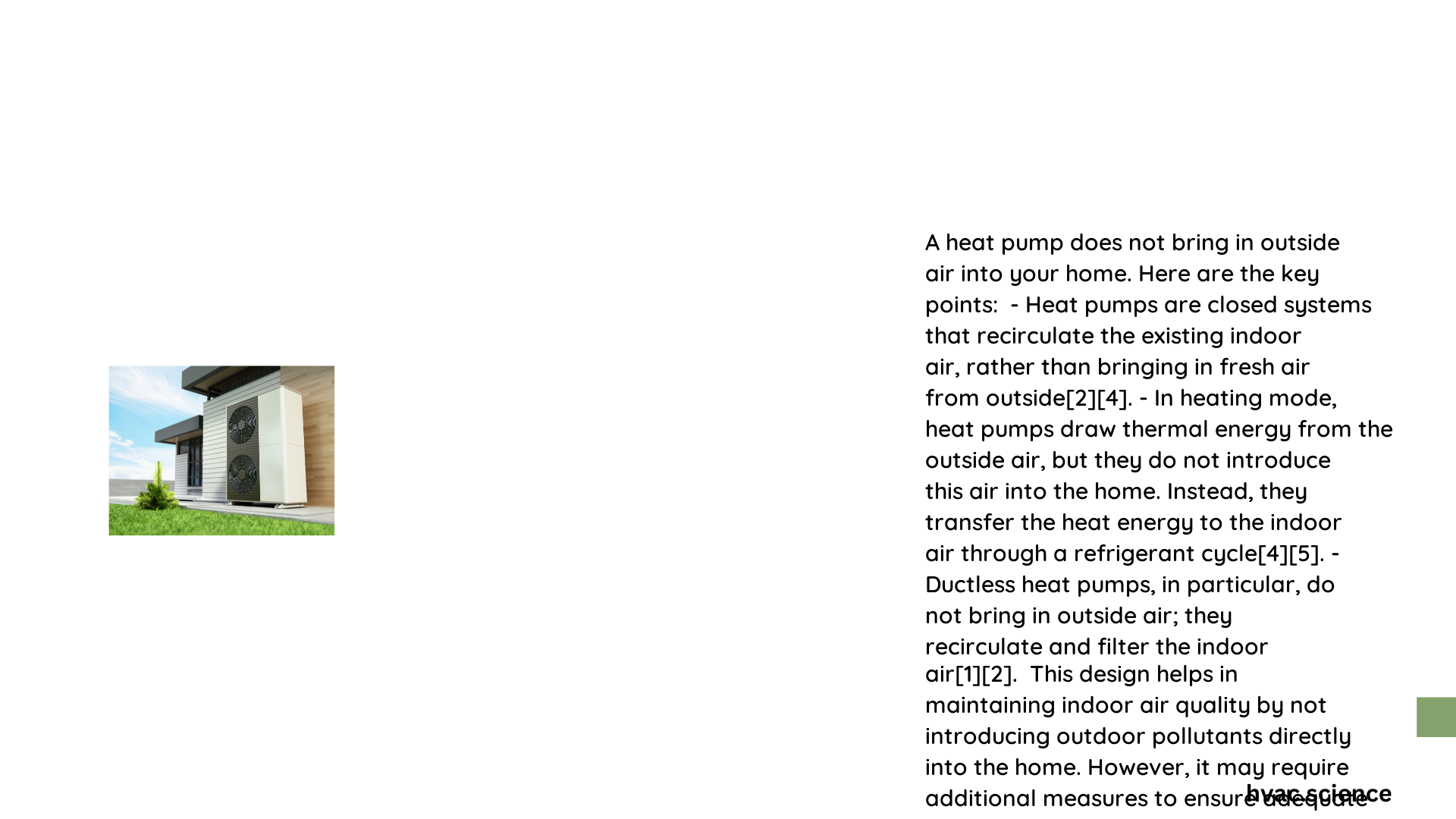Heat pumps are sophisticated thermal transfer systems that interact with outside air through complex mechanisms. Unlike traditional heating systems, they extract thermal energy from external environments, moving heat between indoor and outdoor spaces using refrigerant cycles and specialized coil configurations. Understanding their air intake process reveals intricate engineering that enables efficient temperature regulation across diverse climatic conditions.
What Happens When Heat Pumps Draw Outside Air?
Heat pumps fundamentally interact with outside air through specialized intake mechanisms. Unlike common misconceptions, they do not simply “bring in” outside air directly into living spaces but instead use external air as a heat source or heat sink.
How Do Heat Pumps Extract Air Energy?
Air-source heat pumps utilize external air temperature through a sophisticated process:
- Coil Interaction
- Outdoor unit contains specialized coils
- Fans pull outside air across refrigerant-filled coils
-
Temperature differential drives heat transfer
-
Refrigerant Cycle Mechanics
- Refrigerant absorbs or releases heat based on temperature
- Compressor facilitates thermal energy movement
- Enables heating and cooling functionality
What Airflow Characteristics Define Heat Pump Performance?
| Performance Metric | Typical Range | Impact |
|---|---|---|
| Airflow Rate | 400-500 CFM/ton | Directly influences efficiency |
| Temperature Range | -15°F to 115°F | Determines operational capability |
| Coefficient of Performance (COP) | 2-4 | Measures energy transfer efficiency |
What Factors Influence Outside Air Interaction?
Critical factors affecting heat pump air interaction include:
- External Temperature
- Lower temperatures reduce heat extraction efficiency
-
Modern systems optimize performance through advanced compressor technologies
-
Humidity Levels
- High humidity impacts heat transfer capabilities
-
Affects condensation and system performance
-
Air Quality
- Dust and debris can reduce coil efficiency
- Regular maintenance ensures optimal performance
What Technical Specifications Matter?
Key technical considerations for heat pump air interaction:
- Proper ductwork sizing
- Refrigerant charge accuracy
- Coil cleanliness
- Airflow management
- Defrost cycle effectiveness
Can Heat Pumps Work in Extreme Temperatures?
Modern heat pump technologies have expanded operational ranges:
- Cold-climate heat pumps function effectively below freezing
- Variable-speed compressors adapt to temperature fluctuations
- Some systems maintain 80-90% heating capacity at 5°F
Practical Implications for Homeowners

Homeowners should understand that heat pumps:
– Do not directly introduce outside air into living spaces
– Extract thermal energy through specialized heat exchange processes
– Require professional installation and periodic maintenance
Maintenance Recommendations
- Annual professional inspection
- Regular coil cleaning
- Check refrigerant levels
- Inspect ductwork for leaks
- Monitor system performance
Conclusion
Heat pumps represent advanced thermal transfer technologies that strategically interact with outside air without directly introducing it indoors. Their sophisticated design enables efficient, environmentally friendly temperature management across diverse conditions.
